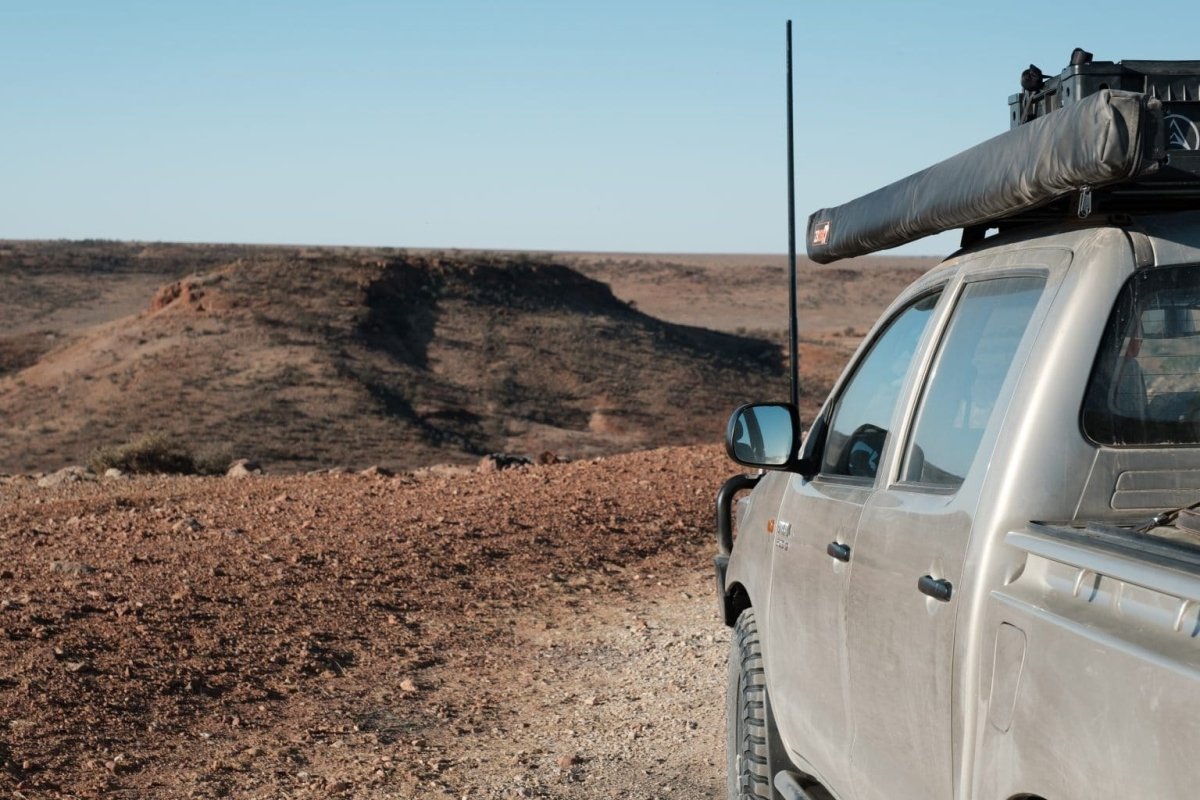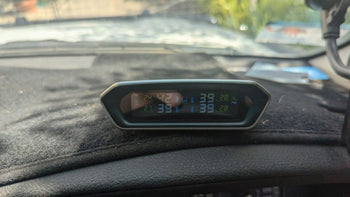

Are you looking at communication options for when you are on the road, travelling Australia? We have put together a list of a few things to look out for when selecting a UHF (Ultra-High Frequency) radio.
History of UHF CB
UHFs have been a staple communication device in the 4WD industry long before the introduction of mobile phones and other modern communication devices. It’s a fantastic way to communicate with others on the road, track or trail that are nearby without reliance on any additional equipment, like phone towers. This independence means that you can travel anywhere and those nearby can communicate with you. They are also great to use in emergency situations when travelling in a convoy.
Before their use in 4WDs, UHFs were heavily relied upon by the transport and trucking industry and still are. This has also seen UHF CB become an amazing resource for learning about nearby road conditions, any upcoming obstacles or just what someone had for breakfast.
What is UHF CB?
- UHF = Ultra High Frequency
- CB = Citizen Band
With the two acronyms out of the way, let’s dive a little deeper into what it actually is. UHF CB is a band of radio frequencies that are designed to allow for the transfer of voice and data. It uses frequencies between 476.4125 and 477.4125 MHz which have a wavelength just shy of 63cm, and within those frequencies are 80 channels.
Because of the very small size of the radio waves (for perspective HF or HAM radio uses 27 MHz or around 11m), they don’t travel a long way meaning that you can usually only communicate with people less than a few kilometres away, terrain and antenna dependent, which we will get to soon. This is what makes it the perfect convoy convo device.
The Citizen Band part of it all basically just means that these frequencies are OK to use without requiring a licence or usage fee of any sort, unlike many other communication devices.
Current UHFs can come in a range of devices, and whether it is handheld or mounted in the vehicle, they will all serve a similar purpose.
Antenna and gains
UHFs rely heavily on the antenna to help create reliable communication. Different antennas will push the radio waves out in, for want of a better term, different patterns. When you have a higher dBi value you have higher gains which more or less means the radio waves are more focused. You end up with a football (not soccer ball) shaped pattern. Lower dBi values mean less gain and the pattern becomes much more like a soccer ball and very spherical. Extremely high gains (9+ dBi) start to offer an almost pencil-like beam which will travel a long way but tends to get interrupted easily.
Because of the additional focus that higher gains (dBi value) provide, these antennas offer a longer communication distance. The flipside to higher gains is a greater likelihood of interference stopping your message from getting through to the other person. This is why high-gain antennas are a great option when you are in large, open flat areas and less so in a hilly country.
A great way to think about it is like using a torch with a focus ring … the power of the light doesn’t change; it is just more concentrated.

Handheld vs mounted UHF

This is an age-old debate and one that the answer pretty much always comes down to “it depends” or “just buy both.”
Which one you decide to go with will usually come down to how you travel and what you do. Vehicle-mounted systems are great — they are often incredibly compact, with many being able to be hidden away under the dash so that just the handpiece is showing. They are also much less likely to run out of power and all of them run at 5 watts, which is the maximum legal power allowed for a UHF in Australia. A vehicle-mounted UHF is also connected to the outside of the vehicle and is usually as high as possible, giving a much better range.
Handheld UHFs on the other hand are, well, handheld. They are extremely portable and allow you to communicate from pretty much anywhere. This portability means that they are great if you need to communicate in scenarios where you are guiding someone reversing, giving directions over an obstacle or if someone in the convoy doesn’t have a vehicle-mounted UHF.
Industry-leading features
There are some really cool innovations going around in the industry that are making UHFs more versatile, easier to use or just cooler-looking.
-
GME XRS system
The GME XRS system is a bit of a game changer for those who want it, though it is certainly not for everyone. The XRS system allows you to Bluetooth connect to your phone. This in itself might seem pretty dull, but what it allows you to do is then transmit your location through your UHF. This can have a myriad of uses but the obvious one is that you can communicate with friends and establish exactly where they are.
-
Dual receive functionality
This feature is exclusive to some of the premium Oricom units, the DTX range. It is pretty self-explanatory in that it allows you to listen to two channels simultaneously. Unlike other radios that allow you to create scan groups across a couple of channels, the Oricom system will actually let you hear two channels at the same time, so you could receive a transmission from say, channel 40 (Hwy channel) and 26 (group convoy) at the same time. It’s incredibly helpful if you want to listen to a channel for road conditions but also be on your own channel to chat with people in the group.
-
Dual antenna functionality
This is another one that is exclusive to Oricom. This feature allows you to transmit and receive via two antennas. This means that you do need to have two antennas on your vehicle, but it also means that you have a much greater likelihood of being able to communicate with those around you. You can easily switch between the two antennas at any time, otherwise, you can set it to automatically transmit off the antenna that receives the strongest signal.
-
Replay button
If you are new to the UHF game, you might not understand the usefulness of this feature. UHF is far from the perfect form of communication and for that reason, there are many occasions where you might experience a weak or broken signal … you also might have a screaming child or an overly chatty person in the car with you which means you don’t hear a full transmission. The replay button, primarily a UNIDEN feature, will allow you to replay the last transmission up to a minute after it has been received.
What to look for when buying a UHF

Now, there are a lot of things to look for when buying a UHF as the market today is flooded with options. Pricing can range from $150–200 up to $500–600 for the unit alone. Within this range of prices, you will see varying levels of quality, and feature sets. Ultimately, you want to find something that is reliable and will allow you to achieve everything you need on the road.
The first thing to look at is how much are you going to rely on this unit. If it is an everyday thing, don’t skimp … sound quality, volume of audio and brightness of the screen are going to be key things to look out for. If you are an advanced user, things like customisation of buttons and additional features like Selcall (Selective Calling) and customisable channels become key selling points.
For those that are less regular, you want to still keep all those options in mind but perhaps edge a little bit more towards price being an important factor. You still want to make sure you have good, clear audio and something that is quite responsive. At the end of the day, even if you are only using it from time to time, if it is something that you are relying upon for safety it’s a good idea to ensure it is of high quality.
The style of the unit is also going to be an important consideration, and you need to think about where you are going to mount it. The ever-popular option is to have the entire unit controlled through the handpiece. This allows you to tuck the actual unit away, leaving more room on the dash. A lot of these styles of units also allow you to detach the handpiece meaning that you can pop it in the glovebox or door pocket until you actually need it. The alternative to these is units that are designed to sit in or on the dash and the mic plugs directly into the unit with all the controls also being on the unit. These options tend to be a little bit cheaper, but it can be harder to find a place to mount. These units also come in a ‘Single DIN’ size and then a ‘mini’ size. This is great if your vehicle is a little bit older and still has DIN-sized slots.
For our full range of ultra-high frequency radios, just click here.



